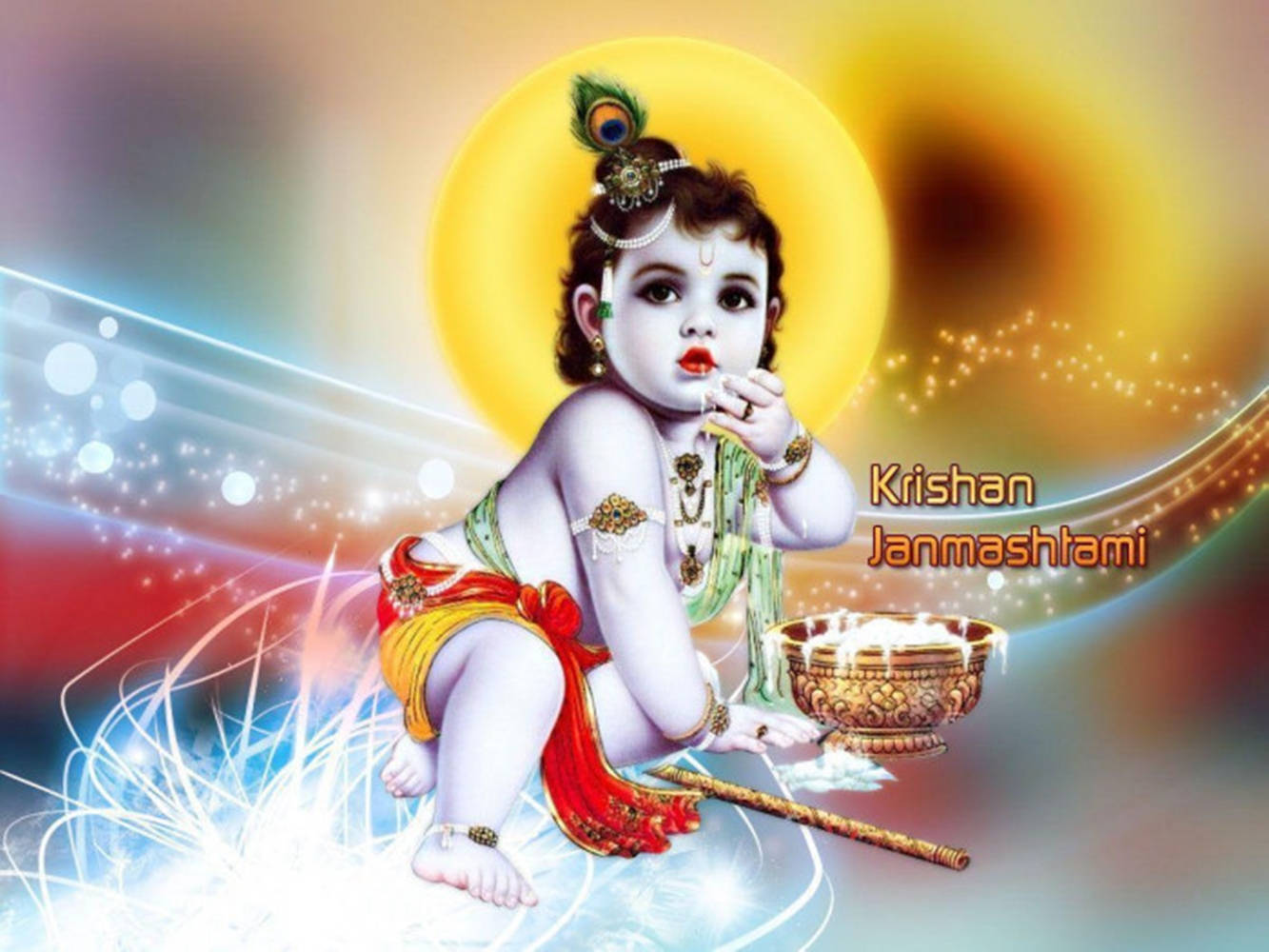Janmashtami Kab Hai? Know the Myths, Beliefs, and Vrat Mahatva

Janmashtami, one of the most vibrant and widely celebrated Hindu festivals, marks the birth of Lord Krishna, the eighth avatar of Lord Vishnu. Every year, devotees across India and around the world eagerly ask, “Janmashtami kab hai?” to plan their celebrations and spiritual observances. But beyond the date, Janmashtami Kab Hai carries profound myths, beliefs, and the sacred importance of fasting, known as Vrat Mahatva. This article explores all these aspects in detail, helping you connect deeper with this divine occasion.
When is Janmashtami?
Janmashtami is celebrated on the Ashtami Tithi (eighth day) of the Krishna Paksha (dark fortnight) in the Hindu month of Bhadrapada. This generally falls in August or September in the Gregorian calendar.
Janmashtami Date in 2025:
In 2025, Janmashtami will be observed on Thursday, 14 August.
The festival reaches its peak during the midnight hours when Lord Krishna was believed to be born, known as Nishita Kaal—an auspicious time for prayer and celebration.
The Mythological Story Behind Janmashtami
The story of Janmashtami is filled with divine miracles and symbolism:
- Birth in Prison: Lord Krishna was born to Devaki and Vasudeva in a prison in Mathura, where they were held captive by the tyrant King Kansa. A prophecy had foretold that Devaki’s eighth child would be the cause of Kansa’s downfall.
- Miraculous Escape: Immediately after Krishna’s birth, Vasudeva crossed the Yamuna River, which parted miraculously, to take the infant to Gokul. There, Krishna was raised by foster parents Nanda and Yashoda to protect him from Kansa.
- Victory of Good Over Evil: Krishna’s childhood and youth are full of stories where he defeated demons sent by Kansa, symbolizing the victory of good over evil.
These stories are celebrated through songs, dances, and plays during Janmashtami, reminding devotees of the divine purpose behind Krishna’s incarnation.
Key Beliefs Associated with Janmashtami
1. Divine Timing and Auspiciousness
The birth of Krishna during midnight is considered the most auspicious moment, known as Nishita Kaal, when the spiritual energy on Earth is believed to be at its peak. Devotees perform special prayers and rituals at this time to seek blessings.
2. Krishna as the Supreme God
Krishna is not only a playful child or charming youth but also the supreme divine force who guides humanity. His teachings in the Bhagavad Gita emphasize righteousness, devotion, and selfless action.
3. The Power of Devotion (Bhakti)
Janmashtami emphasizes the power of bhakti or devotion. It is believed that sincere prayers and fasts on this day can purify the heart and bring one closer to the divine.
4. Protection and Blessings
Devotees believe that worshipping Krishna on Janmashtami removes negativity, protects from evil forces, and grants prosperity and peace.
Vrat Mahatva: The Importance of Fasting on Janmashtami
One of the central aspects of Janmashtami is the observance of fasting (vrat), which holds deep spiritual significance.
Why Do Devotees Fast on Janmashtami?
- Purification of Mind and Body: Fasting helps purify the body and mind, preparing devotees to focus fully on spiritual practices.
- Expression of Devotion: Fasting is a form of penance and dedication, showing love and surrender to Lord Krishna.
- Enhances Concentration: A fasted state enhances concentration during prayers, chanting, and meditation.
- Reward of Blessings: It is believed that observing a fast with sincerity brings divine blessings and fulfillment of wishes.
Types of Fasts Observed
- Nirjala Vrat: Some devotees observe a strict fast without consuming any food or water throughout the day and night until the birth time of Krishna.
- Phalahar Vrat: Others consume fruits, milk, and light foods but avoid grains and heavy meals.
- Partial Fast: Some devotees eat once or twice but avoid certain foods considered impure or tamasic.
Rituals and Practices During Janmashtami Vrat
1. Pre-Dawn Puja and Meditation
Devotees wake up early and start their day with prayers, meditation, and reciting mantras dedicated to Krishna.
2. Puja Preparation and Decoration
The puja area is cleaned and decorated with flowers, lights, and colorful rangoli patterns. A small idol or picture of baby Krishna is placed on a cradle, symbolizing his birth.
3. Midnight Celebration
The main event of Janmashtami is the midnight puja, performed exactly at the time Krishna is believed to have been born. The idol is bathed with holy water, milk, and Panchamrit (a sacred mix of milk, curd, honey, ghee, and sugar). After dressing the idol in fine clothes and jewelry, devotees sing bhajans and perform aarti (waving of lamps).
4. Breaking the Fast
After the puja and Aarti, devotees break their fast with prasadam — sanctified food, usually including sweets like makhan mishri (butter and sugar), ladoos, and fruits.
Cultural Traditions and Festivities
Dahi Handi
In many parts of India, especially Maharashtra, the festival is celebrated with the lively tradition of Dahi Handi. Inspired by Krishna’s love for butter, a pot filled with curd or buttermilk is hung at a height, and teams form human pyramids to break it. The event is accompanied by music, dance, and communal joy.
Raslila and Krishna Leela
In regions like Mathura and Vrindavan, the birthplace and childhood home of Krishna, dramatic enactments of Krishna’s life — known as Raslila — are performed. These plays recount his divine deeds, love stories, and heroic feats.
Spiritual Benefits of Janmashtami Vrat
Observing Janmashtami vrat is believed to bestow several spiritual and worldly benefits:
- Removes Sins: The fast and prayers are said to cleanse sins and past karmas.
- Grants Spiritual Progress: Strengthens one’s connection with the divine and advances spiritual growth.
- Brings Peace and Prosperity: The blessings of Krishna are believed to bring harmony, wealth, and happiness to one’s family.
- Fulfills Desires: Devotees pray for success in various aspects of life and believe their wishes will be granted.
Conclusion
Janmashtami is far more than just a date on the calendar. It is a sacred occasion brimming with mythology, deep beliefs, and spiritual discipline through fasting. Knowing “Janmashtami kab hai?” is just the beginning; embracing the myths, understanding the beliefs, and observing the vrat with devotion allow devotees to experience the festival’s true essence.
This auspicious day is a celebration of divine love, cosmic order, and spiritual awakening. Whether through fasting, prayers, singing, or joyous festivities like Dahi Handi, Janmashtami inspires millions to connect with Lord Krishna’s timeless message of dharma and devotion.
Jai Shri Krishna!






